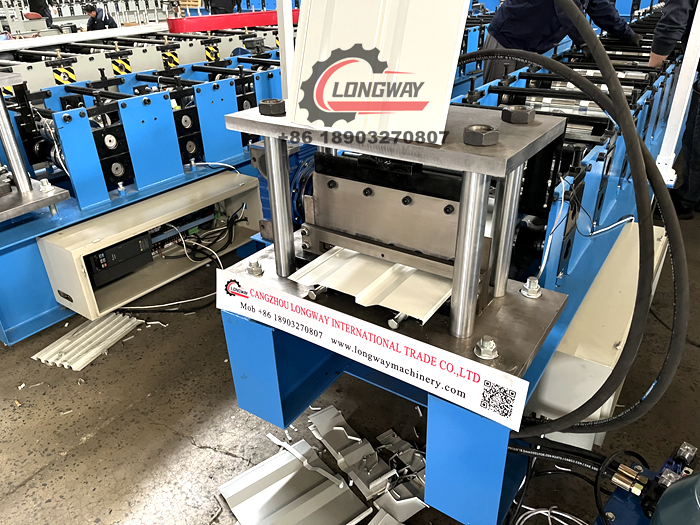Exploring the Benefits and Applications of Roller Forming Technology for Metal Fabrication
Understanding Roller Formers The Backbone of Steel Fabrication
Roller forming, a crucial process in the realm of metal fabrication, plays an essential role in shaping materials into useful components. As industries evolve, the demand for precision-engineered products has surged, pushing roller forming technology to the forefront of manufacturing processes. In this article, we will delve into the intricacies of roller formers, their working principles, advantages, and applications across various sectors.
What is Roller Forming?
Roller forming, also known as roll forming, is a continuous bending operation in which metal sheets or strips are progressively shaped into desired profiles through a series of specially designed rolls. This process enables manufacturers to create complex cross-sectional shapes consistently and efficiently. Typically, materials like steel, aluminum, and other metals are used due to their malleability and strength.
The Roller Forming Process
The roller forming process begins with a straight metal strip that is fed into a series of rollers. Each roller progressively bends the strip into a part of the final shape. The rollers are arranged in a specific sequence, allowing for incremental bending at various angles. This careful arrangement ensures that the metal is not overstressed, which could lead to cracking or deformities.
The major steps in the roller forming process include
1. Material Preparation The metal strips are selected based on the required specifications and are cut to the necessary lengths. 2. Feeding The prepared strips are fed into the roll forming machine, where they will undergo multiple passes through the rollers.
3. Forming As the strips pass through each set of rollers, they are gradually shaped into the final desired profile. This stage can incorporate several designs, from simple shapes like angle irons to more complex sections needed for specific applications.
4. Cutting and Finishing Once the forming is complete, the metal is cut to the required lengths and may undergo additional processes like welding, punching, or surface treatment.
Advantages of Roller Forming
Roller forming offers a variety of advantages compared to other shaping processes.
1. High Efficiency The continuous nature of the process allows for high production rates, making it ideal for high-volume manufacturing.
roller former

2. Consistent Quality The precision of the roller forming setup ensures uniformity in dimensions and reduces the likelihood of defects.
3. Material Utilization Roll forming minimizes waste, as it uses material efficiently and can accommodate different thicknesses and widths of metal strips.
4. Versatility With the right tooling, roller forming can create a wide range of shapes and profiles, making it adaptable to different industry needs.
Applications of Roller Forming
Roller formers have numerous applications across various industries, notably
1. Construction In building and construction, roller-formed materials such as roof panels, wall sections, and structural supports are commonly used due to their strength and durability.
2. Automotive The automotive industry utilizes roller forming to manufacture components like frames, brackets, and panels, which require lightweight yet rigid materials.
3. Aerospace Aerospace applications benefit from roller-formed parts that meet exact specifications and industry standards while minimizing weight.
4. Consumer Goods From furniture frames to appliance components, roller forming is integral in producing many consumer products, offering both efficiency and cost-effectiveness.
5. Electrical Roller forming is employed in creating intricate electronic housings and support systems, showcasing the versatility of this technique.
Conclusion
In summary, roller forming is an invaluable technology within the metal fabrication industry. Its capability to produce high-quality, complex shapes efficiently makes it an essential process for various applications. As manufacturing continues to advance, roller formers will play a pivotal role in meeting the ever-increasing demand for precision-engineered products. Whether in construction, automotive, aerospace, or consumer goods, the importance of roller formers cannot be overstated, reaffirming their place as the backbone of steel fabrication. As we look to the future, innovations in roller forming will undoubtedly lead to even more efficient and sustainable manufacturing solutions.
-
Roof Panel Machines: Buying Guide, Types, and PricingNewsJul.04, 2025
-
Purlin Machines: Types, Features, and Pricing GuideNewsJul.04, 2025
-
Metal Embossing Machines: Types, Applications, and Buying GuideNewsJul.04, 2025
-
Gutter Machines: Features, Types, and Cost BreakdownNewsJul.04, 2025
-
Cut to Length Line: Overview, Equipment, and Buying GuideNewsJul.04, 2025
-
Auto Stacker: Features, Applications, and Cost BreakdownNewsJul.04, 2025
-
Top Drywall Profile Machine Models for SaleNewsJun.05, 2025








